Pine Ridge, South Dakota
—
A four-pack of rez dogs trotted toward the lone grocery store, greeting and tailing human companions in hopes of a spare scrap.
But food isn’t the easiest to come by for many residents here.
This community, tucked along the southern edge of South Dakota, is the most populous of the Pine Ridge Reservation, which stretches 2.1 million acres across a landscape of grassy plains, pine-speckled rolling hills and striking badlands.
It’s also one of the most economically depressed areas in the United States, and it’s nearing a state of emergency as the federal government shutdown has hampered the delivery of Supplemental Nutrition Assistance Program funds and other sustenance assistance.
Residents here are running out of food, running out of options and are tearfully fearful about how they’ll survive.
“It’s really going to hurt a lot of families; a lot of people depend on it like myself, my kids,” said Chiffon Two Bulls, 38, a single mother of four who has some bread and a pack or two of meat left. “I think it would cause a lot of people to lose hope.”
On Thursday, a federal judge in Rhode Island ordered the Trump administration to fully fund SNAP in November. The administration quickly appealed the order; however, if it stands, it could take several days more for benefits to reach recipients.
In a community where many are hanging on by a thread, the federal shutdown not only is laying bare the fragility of safety net programs but also is showing how swiftly and painfully that thread could be cut.
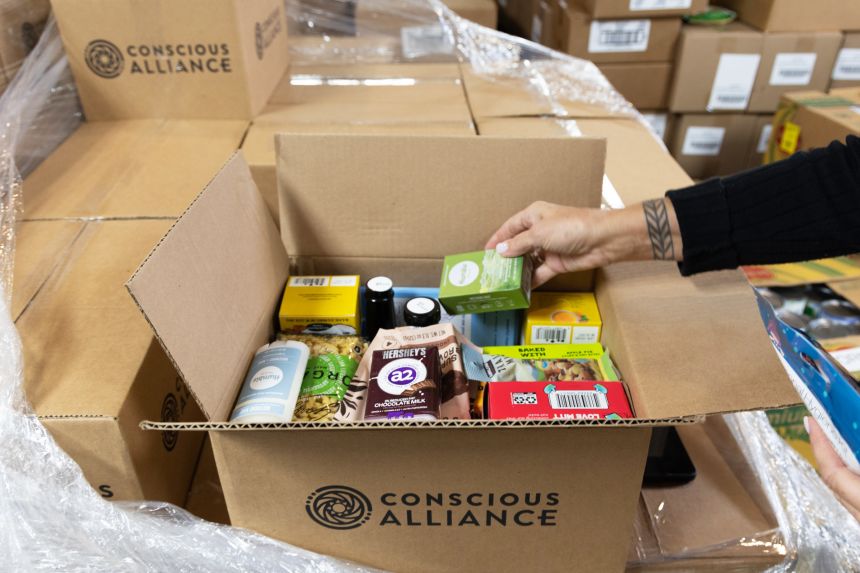
Pine Ridge is representative of a harsh dichotomy: It’s home to a sovereign nation, rich in resilience, history and culture, but one that’s been stifled by displacement to resource-starved regions and centuries of systemic oppression.
Poverty and unemployment rates are staggeringly high (more than 80% in some districts, tribal leaders say). Opportunities and amenities are scant.
“Every social indices you could think of, we’re on the bad end of that,” said Jake Little, director of food distribution for the Oglala Sioux Tribe.
It’s a textbook food desert where the sole supermarket, the Buche Foods off Main Street, serves a 50-mile radius.
RF Buche (pronounced Boo-ey) is a fourth-generation grocer who has operated this store in Pine Ridge since April 9, 2019. He took over the space from a longtime operator and got the new store up and running in 28 days.
“We had to go out before the 10th,” Buche said, noting that’s when SNAP benefits hit EBT debit cards — which give access to government-issued food benefits — in South Dakota.
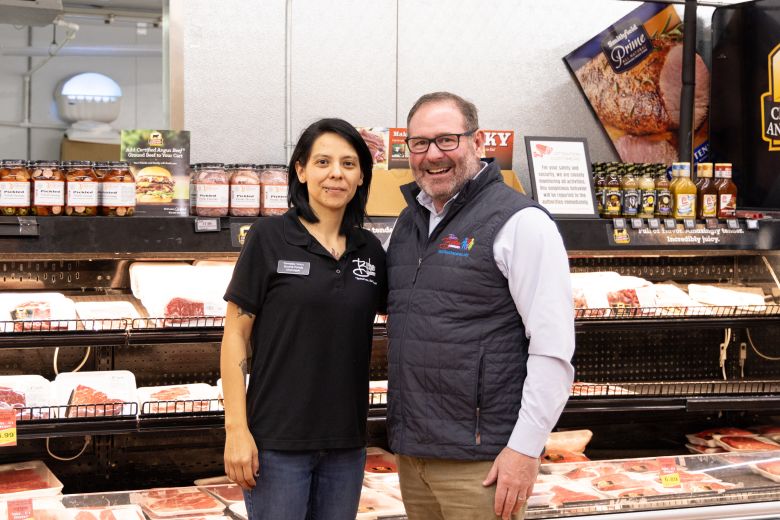
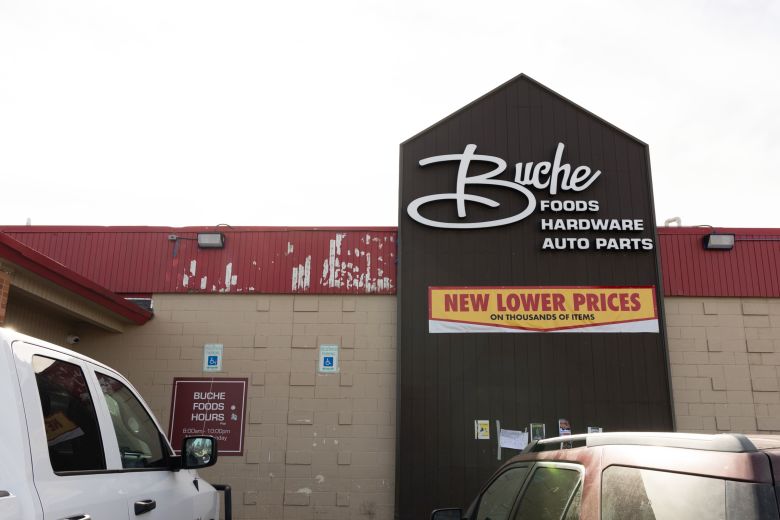
But in an impoverished community where SNAP serves as a lifeblood, those dollars don’t go as far as they could – certainly not at a small, independent, rural grocer whose costs are high at the outset.
“Why is it when my wholesaler’s truck backs up to General Mills at the same time Walmart’s does for an 18-ounce Cheerios, $6 is my cost before I put a markup on it, and Walmart’s is sitting on the shelf at $4.38?” Buche said, standing in the aisles of his Pine Ridge location. “Here we are in the most economically depressed part of this country, and my customers have to pay more for their groceries because they don’t live next to a Supercenter.”
The next closest store of Buche Foods’ size and offerings is a 45-minute drive east over in Martin; or an hour south in Chadron, Nebraska, a tiny college town with a Walmart, a small natural foods co-op, and a soon-to-be shuttered Safeway grocery store that was liquidating its remaining inventory earlier this week.
But getting to places like Martin or Chadron takes having a running vehicle – or even access to one.
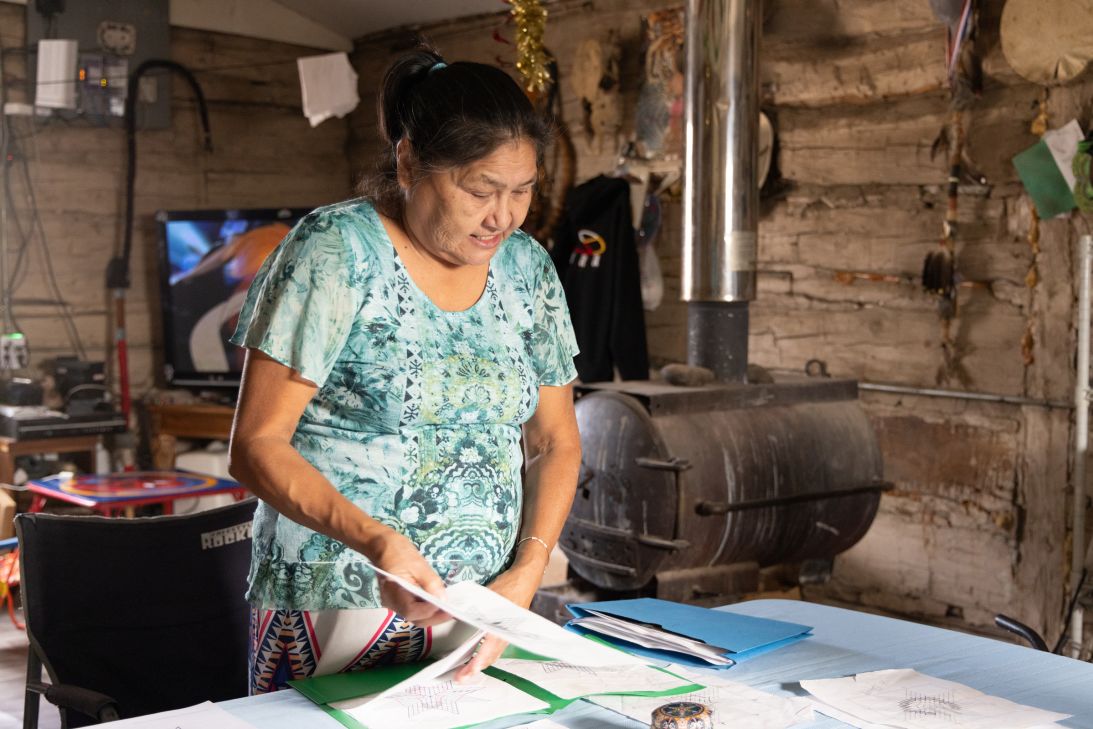
The transmission is shot on Katherine Water’s car, and the 59-year-old great-grandmother relies on others for rides – or her own two feet – to make the four-mile trip down the rural highway to Buche Foods, where she can oftentimes catch a ride back.
She has seven screws and a metal plate in one of her legs; so when the cold weather hits, it bites even more. Complicating matters further, she’s had to buy and haul cases of water for three months now, because the well pump’s been out at her home.
Four to six cases last for just as many days, for her, her brother and the “oodles” of grandchildren (including foster children) and the great-grandchildren who come and go from her home.
“It’s kind of tough right now,” Water said.
Being disabled, Water can’t really work many traditional jobs, which are incredibly hard to come by here in the first place. So, survival might come down to her making and selling more star quilts.
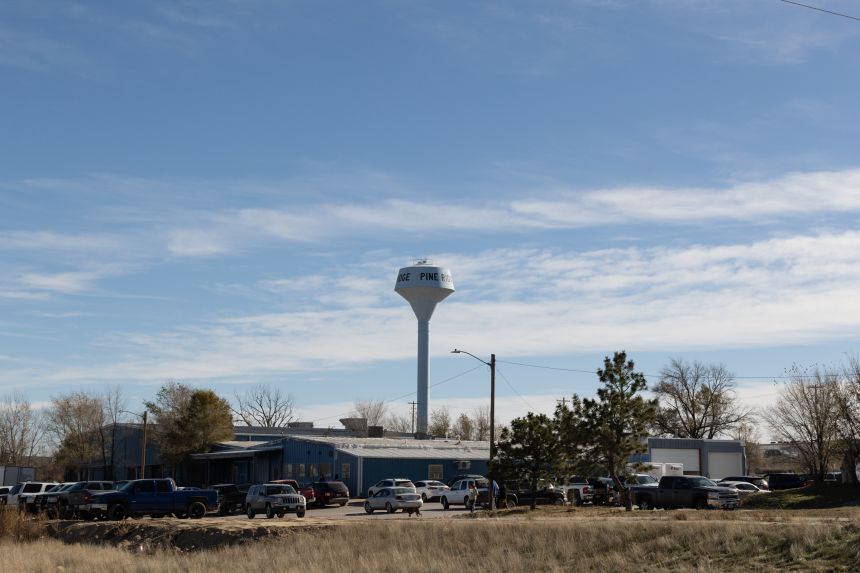
The handsewn and carefully backstitched quilts feature colorful images of buffalo heads, turtles, eagles, angels and other patterns that come to Water in her dreams. She gets rides into town to try to sell them there to residents or visitors or heads up to the emergency room with a pen and notebook to take orders.
The quilts, varying from baby blankets to queen and king size, range from under $80 to $300 for the king sizes, which take a lot more work. “I know money is scarce. I try not to push my prices up, because I know everybody has a hard time.”
The money from the quilts – when she’s able to sell them – typically is spoken for by utilities, crafting supplies from Walmart, clothing for the kids and other necessities. But now, it also needs to go to the food bill.
“Any kind of little money I get, if I ain’t buying material, batting or sheets, we ain’t gonna have nothing,” she said. “We ain’t gonna have no lights. We ain’t gonna have no phone to call out in case of emergency.”
“So, I have to just get on it,” she said, “I have to just get on it and do what I need to do.”
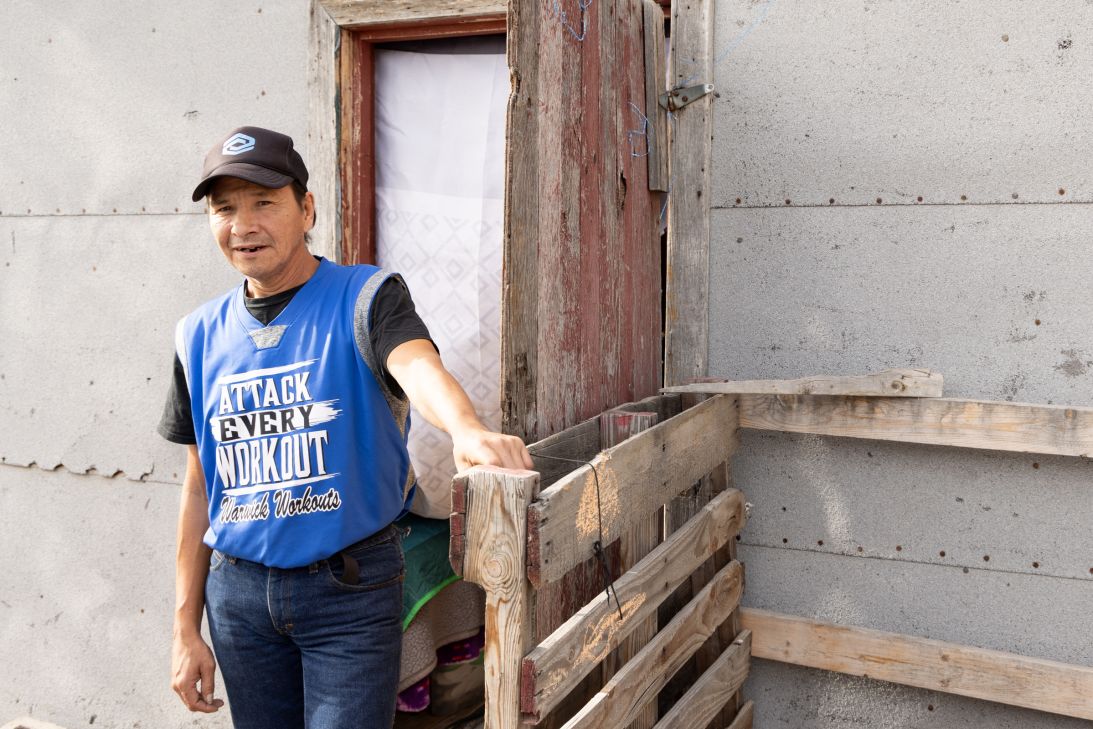
The same goes for her brother, Nathaniel Waters (whose last name was registered slightly differently when they were children).
Waters, 53, lives in a small outbuilding next to his sister’s home.
“I call this the bachelor pad,” he said, smiling as he pulled up the heavy blanket that helps provide insulation behind the door.
The structure’s a bit of a tight squeeze for a bed and a desk. “But it stays comfy,” Waters said.
Waters hasn’t had a stable job since January. He’s been applying for work, but nothing permanent has come through just yet.
He applied for SNAP and general assistance (under the Bureau of Indian Affairs) but was told he was overqualified for the latter, which provides temporary financial assistance for needs such as food, clothing, shelter and utilities. His SNAP benefits were reduced to $168 per month, down nearly $100 from what he was previously receiving.
The reduction, which was unrelated to the shutdown, was triggered by the expanded food stamp work requirements implemented November 1 as part of the One Big Beautiful Bill Act. Native Americans are exempt from those new requirements; however, applicants still have to register for work with the SNAP agency or state employment office.
“I was told I needed to find a job; and around here, it’s hard to find a job,” he said.
In the meantime, he’s been picking up odd jobs where he can. Those often require him getting out to Allen, a town that’s nearly 50 miles away. The hope, he said, is to earn $50, $100, or whatever he can, to bring back home.
“I try to keep money on the side in case something happens to her and she goes to the hospital,” he said. “I got her house on the internet, the fax machine I’m working on that again, so I’m teaching her technology and trying to get her a home system set up where she don’t have to go nowhere and (instead) do at-home work.”
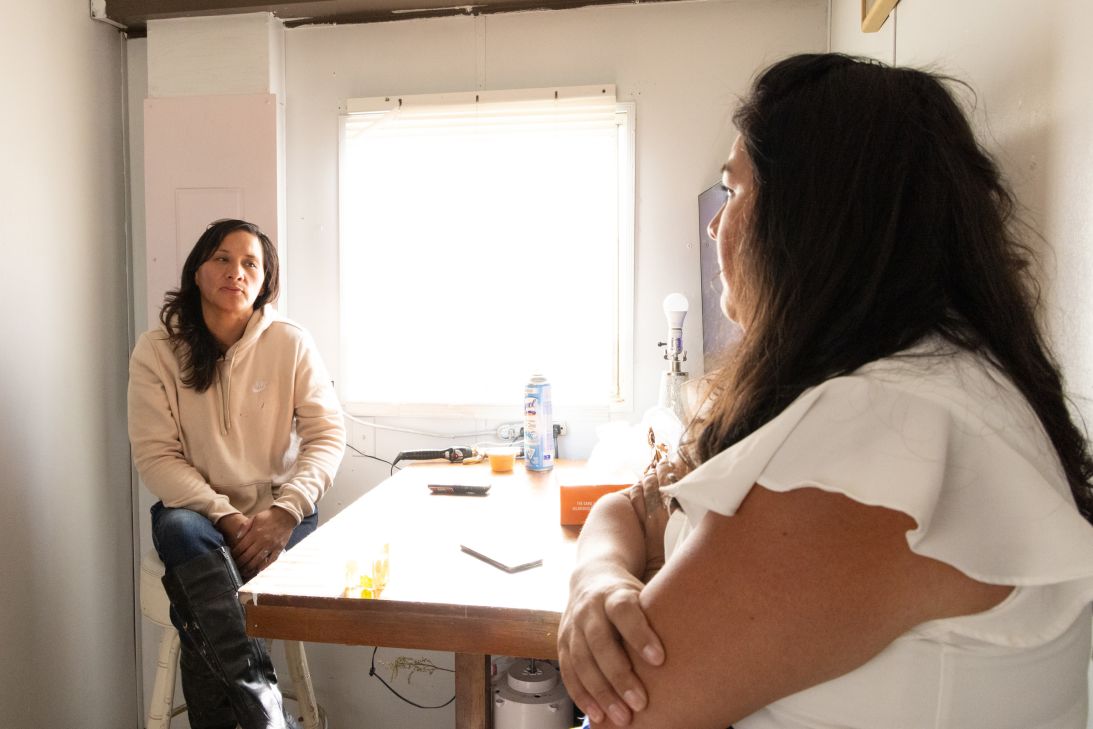
About three miles southeast as the crow flies, Two Bulls was grappling with recently reduced SNAP benefits because of imposed work requirements.
She previously received between $600 and $700 a month for the family of five, but now she’s down to $100, if she gets anything at all.
Two Bulls, an artist whose sole income is her beadwork, has applied for other work around town and in neighboring communities but hasn’t received any calls back. She’s tried the day laborer route; however, she was chosen only one time in the past year.
“You have to show up on Monday, be there before eight, and they take three, four people to work – and that’s for the week,” she said. “So, I just stopped going, because I never got picked.”
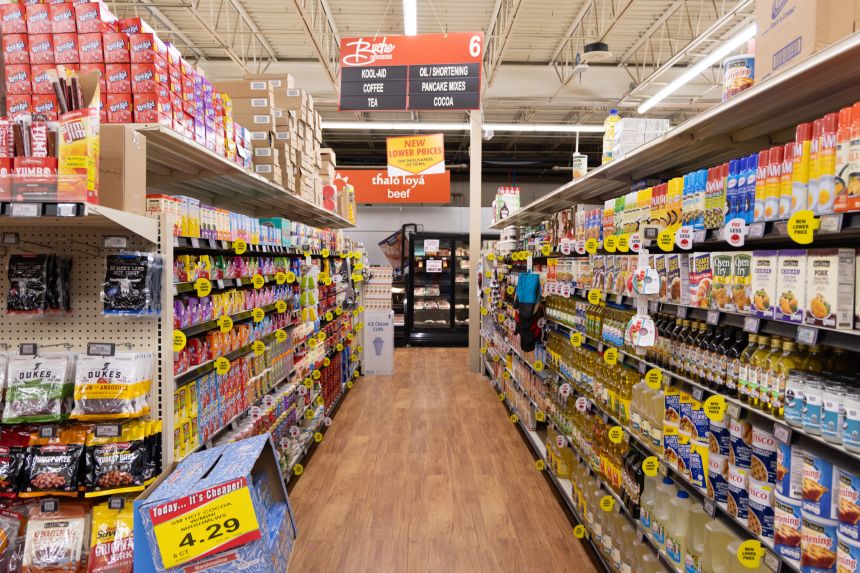
Plus, her home has needed significant attention in recent months, and she’s had to spend her time making repairs. Two Bulls lives in a trailer home that was one of 200 provided more than a decade ago by the Federal Emergency Management Agency following a devastating tornado.
But that trailer wasn’t built to withstand the brutal weather of the Northern Plains. The roof started caving in after the heavy snow this winter and a steady rain this summer.
“I’ve been working on it by myself,” she said, her hands and boots bearing flecks of paint from her ceiling work earlier Monday. She’s hoping to finish the repairs come winter, at which point she’ll have to contend with freezing temperatures and high bills. “It gets cold in here if I don’t have the stove running.”
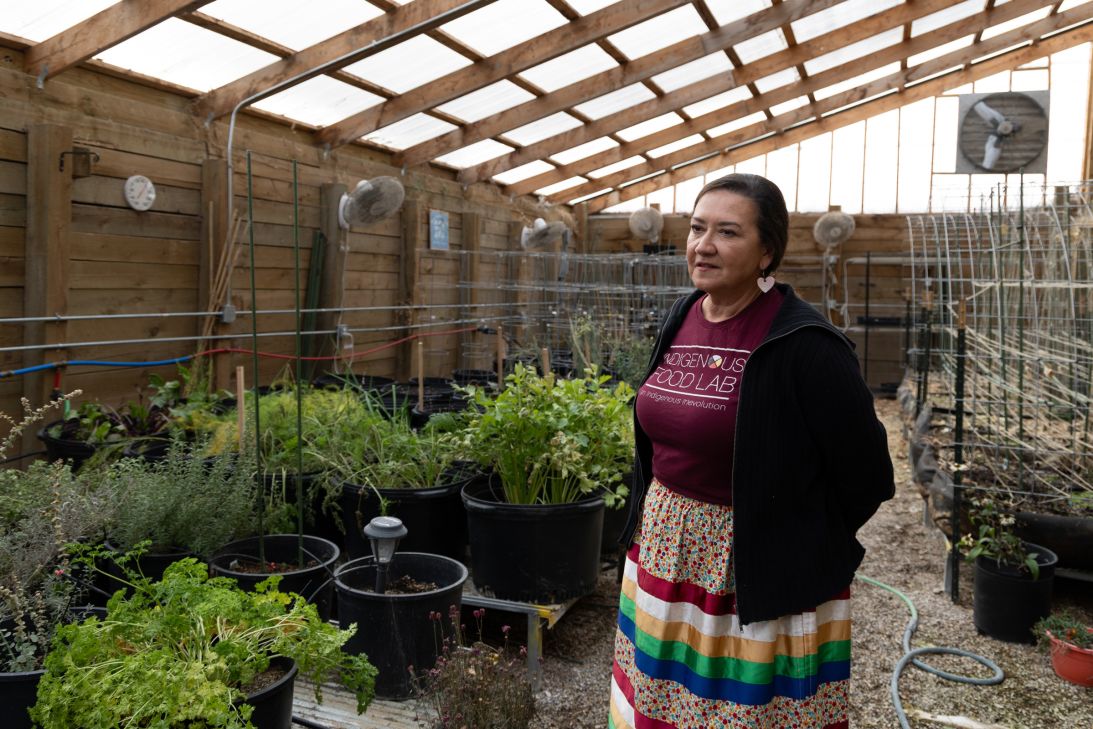
Other businesses and organizations are hoping to serve as support systems: Buche, through his family’s Team Buche Cares nonprofit organization, has been raising funds to distribute $100 grocery certificates to families affected by the loss of SNAP support.
Over in Oglala, South Dakota, the Conscious Alliance Food Sovereignty Center is trying to serve a few more households than it typically does on a weekly basis.
“The food pantry can’t close the gap of SNAP,” said Natalie Hand, Pine Ridge Reservation field director. “We can provide one meal to SNAP’s nine. We just can’t fill that gap.”
This coming Wednesday, the pantry plans to serve the first 60 households, giving priority to those with children and elders.
As SNAP funding hangs in the balance, the Oglala Sioux Tribe also is trying to navigate frozen funding for programs, including the Food Distribution Program on Indian Reservations, often referred to as the commodity food program (or colloquially here, “commods”).

Low-income Native Americans who live on or near reservations are allowed to receive either SNAP or commods, but not both. While SNAP can be used at authorized retailers for eligible food items, commodity participants receive a monthly box of food items from a distribution center.
On Tuesday morning, the parking lot and the gravel road near the Oglala Commodity Warehouse in Pine Ridge was plumb-full of pick-up trucks and cars. Inside, residents waited as workers filled boxes with a selection of canned goods, meats, and fresh and frozen produce.
The warehouse serves about 90 to 100 households daily, said Little, the food distribution manager. However, in recent weeks, that number has grown as families have proactively dropped SNAP to sign up for FDPIR, he said.
“Yesterday, I think we had 47 come in that left SNAP,” he said.
However, depending on how long the shutdown lasts, the commodity offerings could eventually start to run dry, Little said.
“We were advised to order as much as we can safely hold here,” he said, adding that the capacity at the two warehouses on the reservation is about four months. “However, if people are being kicked off of SNAP, the influx of people … that’s something we haven’t ironed out yet.”

Little said he’s hashing out some contingency plans to ensure residents are fed; however, he and tribal leaders state that these aren’t merely welfare programs, they are treaty-anchored obligations.
Oglala Sioux Tribe President Frank Star Comes Out said that the 1851 and 1868 Fort Laramie treaties requires the US government to provide food, supplies and support in exchange for peace, land cessions and passage.
“Our people gave up land so that [the US government] can make millions and millions and billions of dollars off it, but you cannot live up to your treaty obligations,” Star Comes Out said. “There’s something wrong with that.”
The tribe has sent letters to members of Congress, to the Department of the Interior, to the BIA, arguing that the treaty obligations have not been upheld, he said.
“Crickets,” he said, noting a lack of response.
Amid that silence, the desperation has become deafening.
Anna Halverson, a tribal council representative, said she’s heard from residents who are scared about how they’re going to feed their kids, others who are close to losing all hope, and some who are frightened that the lack of SNAP funds could cause panic or violence.
“Why can’t [the government] see that this turmoil is causing chaos to our reservations, who are already living through chaos,” she said. “It’s difficult to come up with a solution. It’s difficult to tell families you’re going to be OK.”
Still, Star Comes Out said, while the community has long been severely under-funded and under-resourced, it’s also been resilient across many of its generations.
“We may be in poverty, but we’re strong in culture,” Star Comes Out said. “That’s what keeps us alive.”

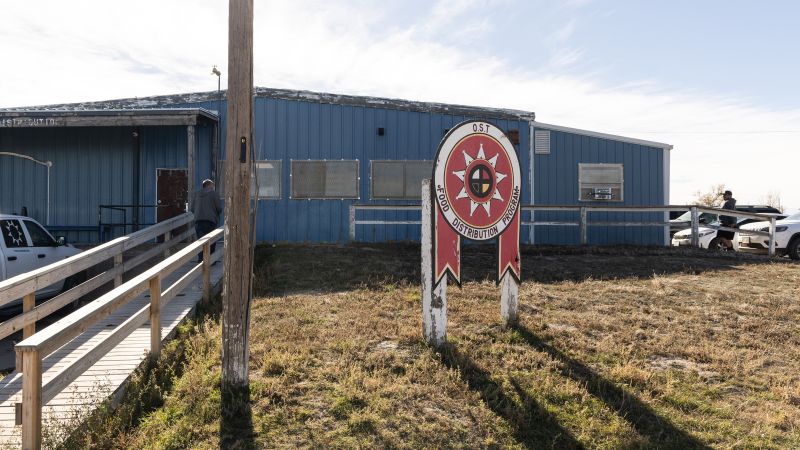
Dining and Cooking